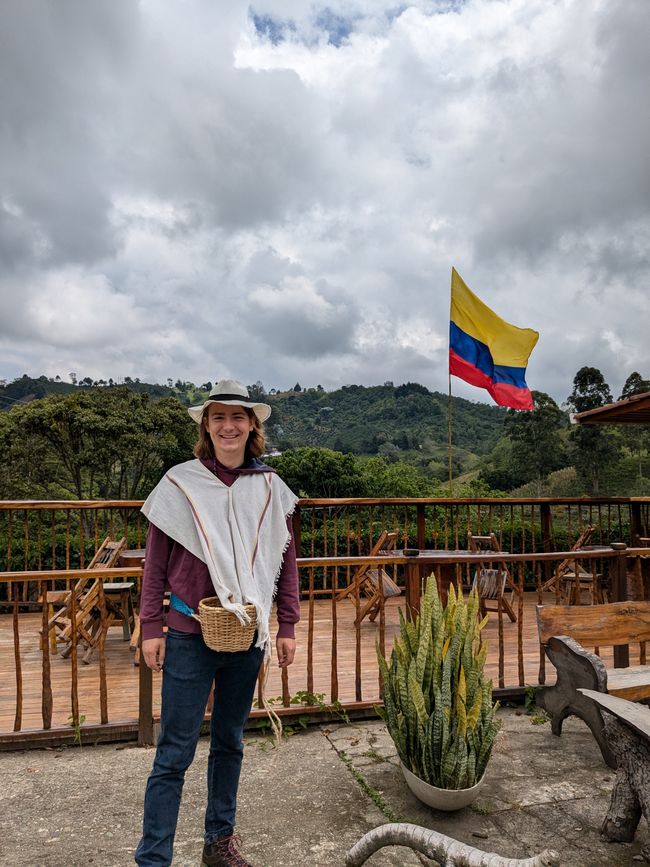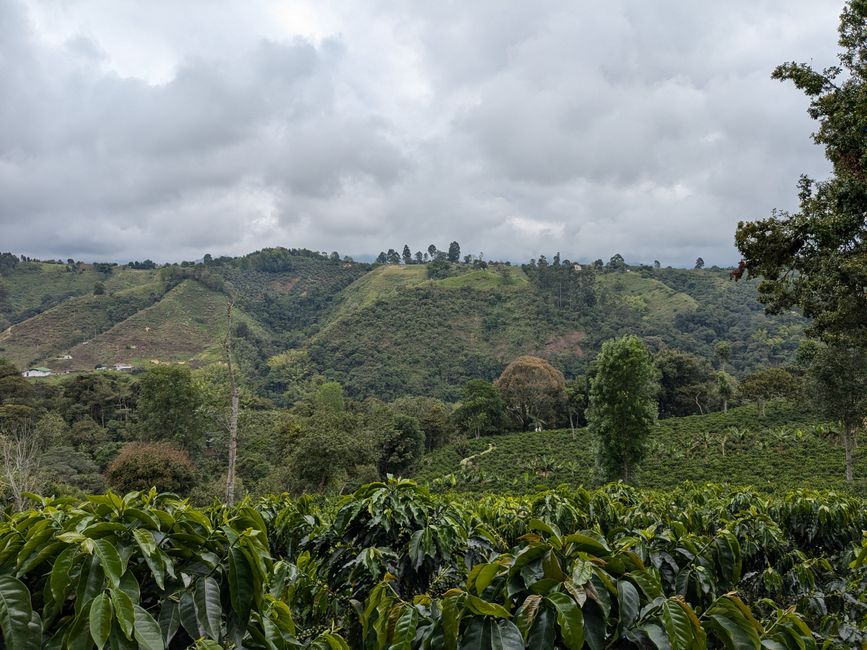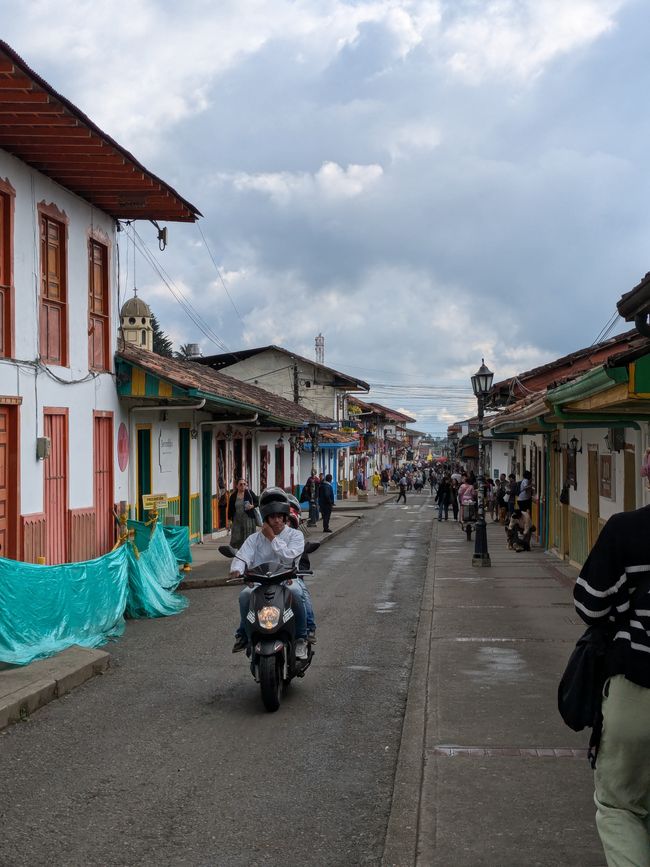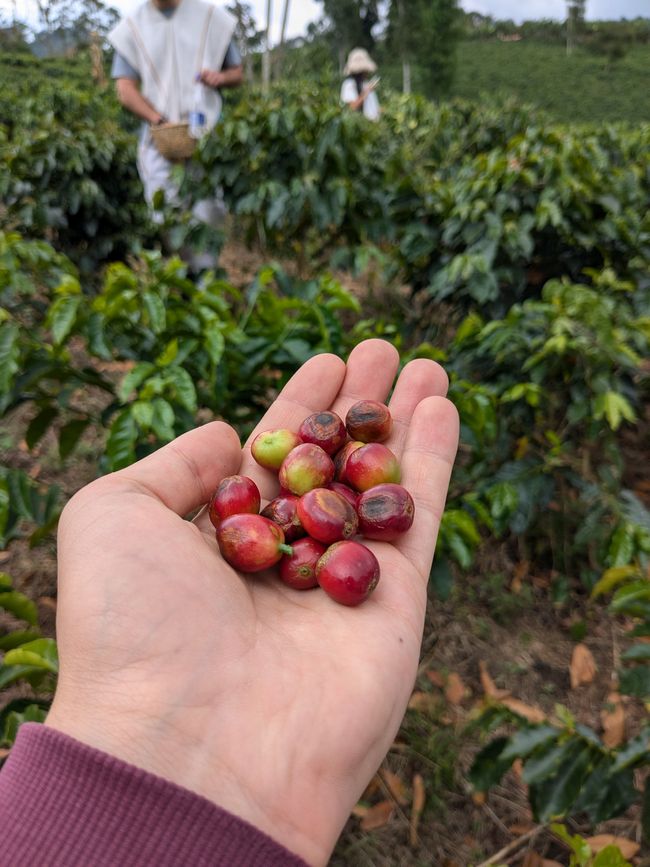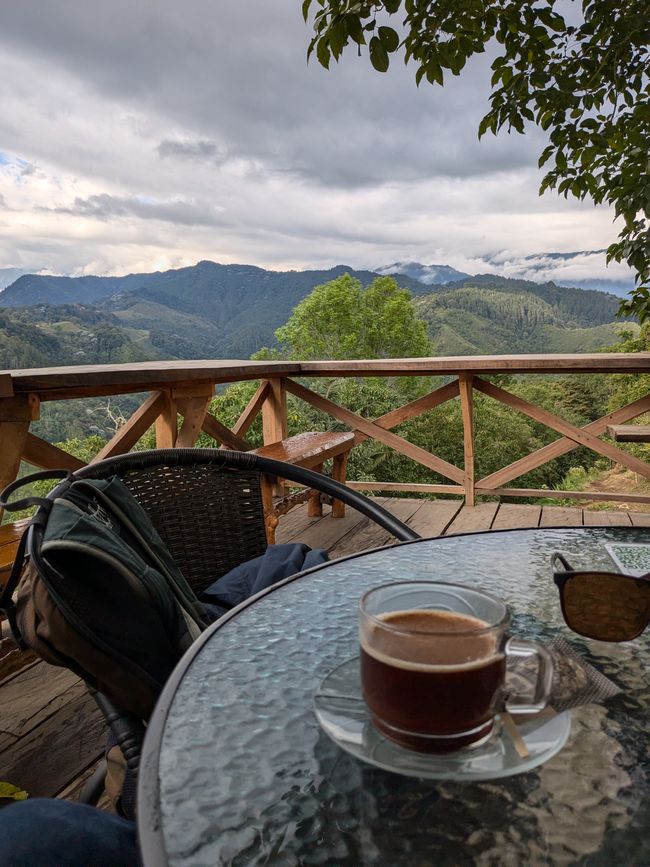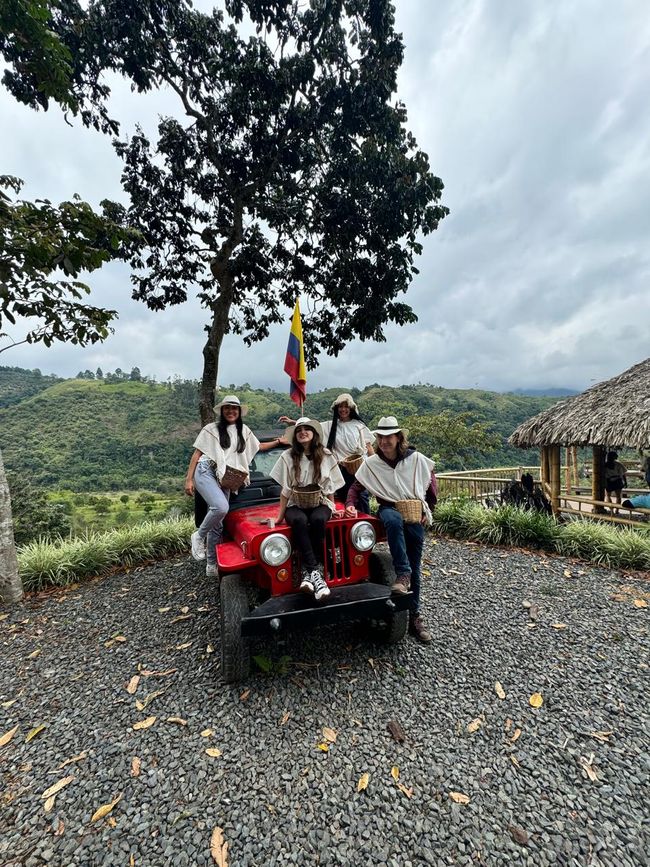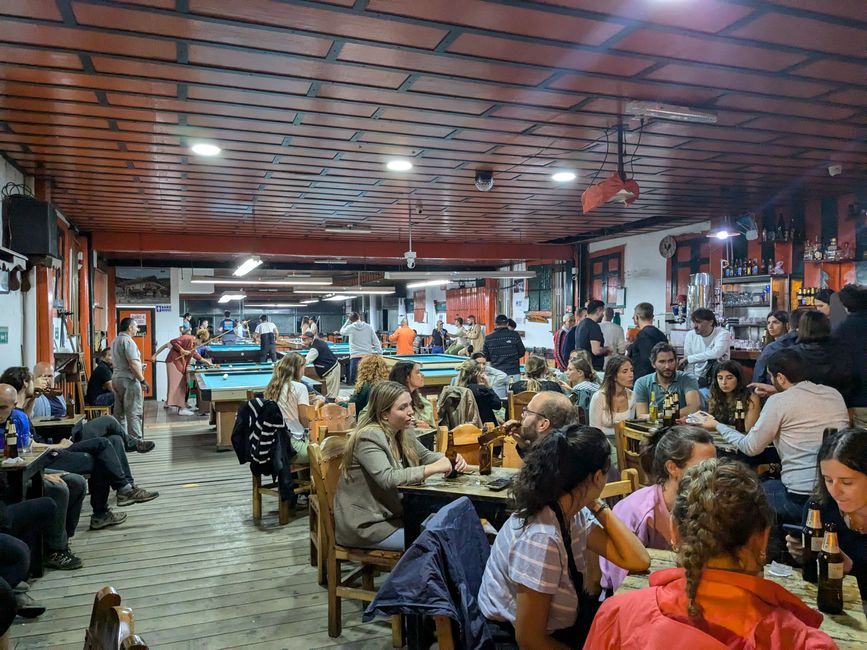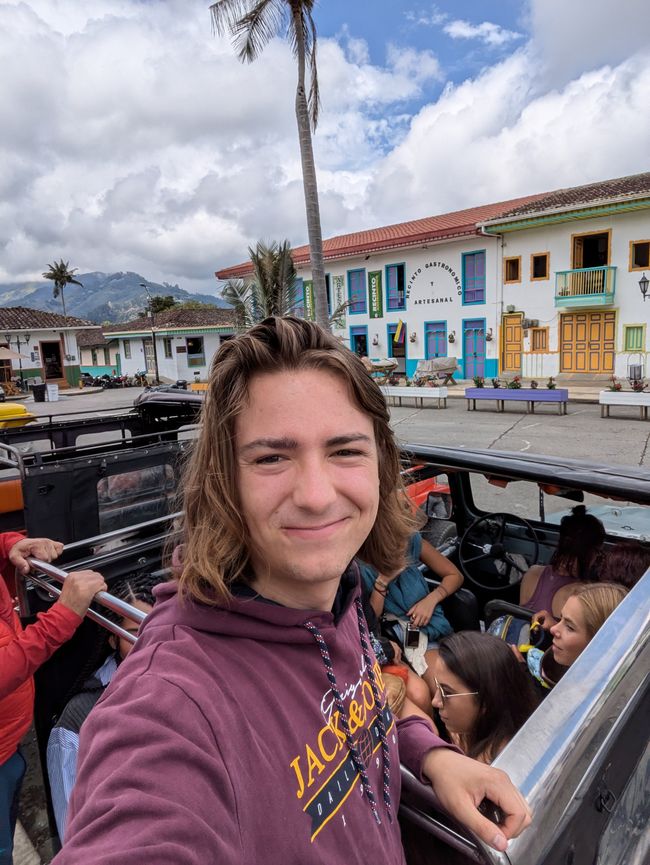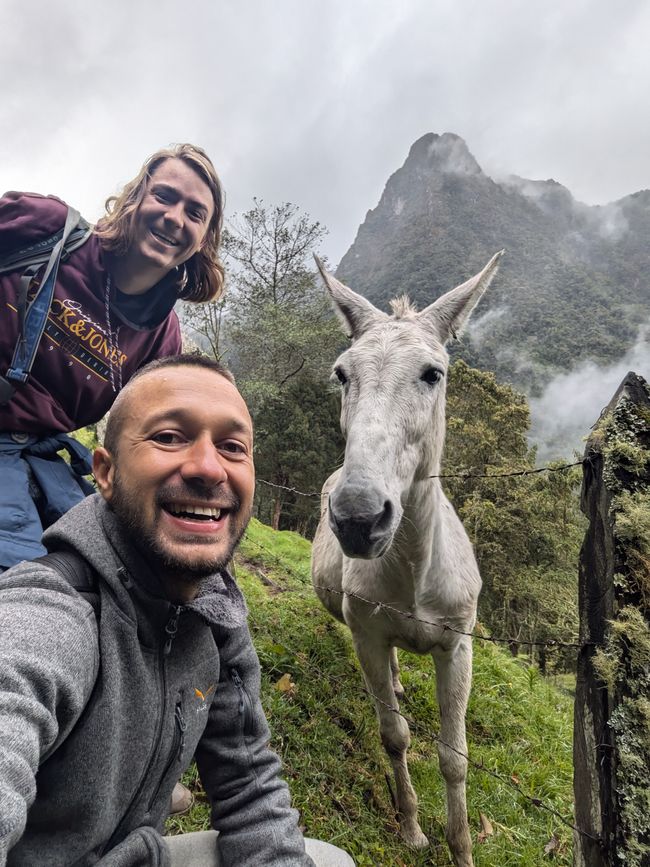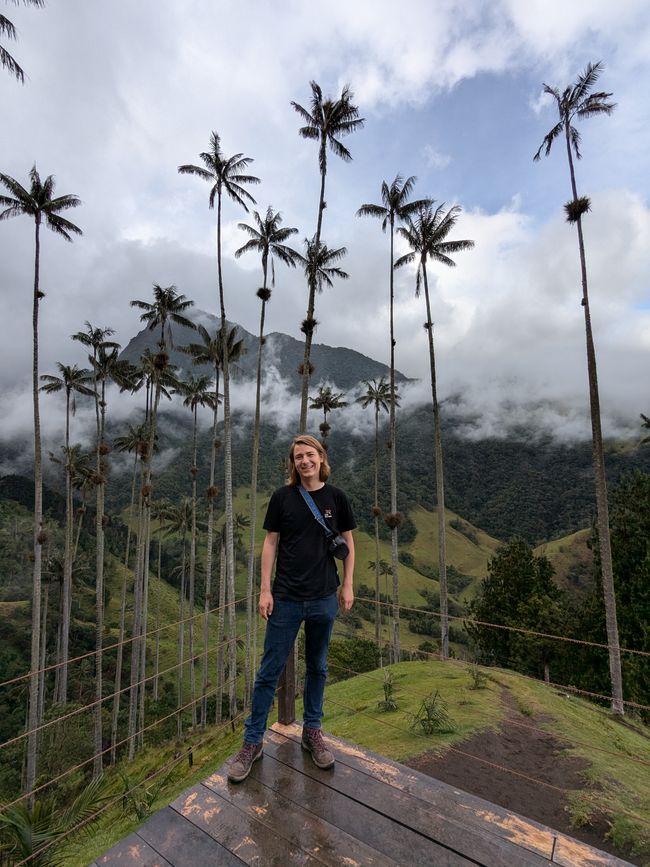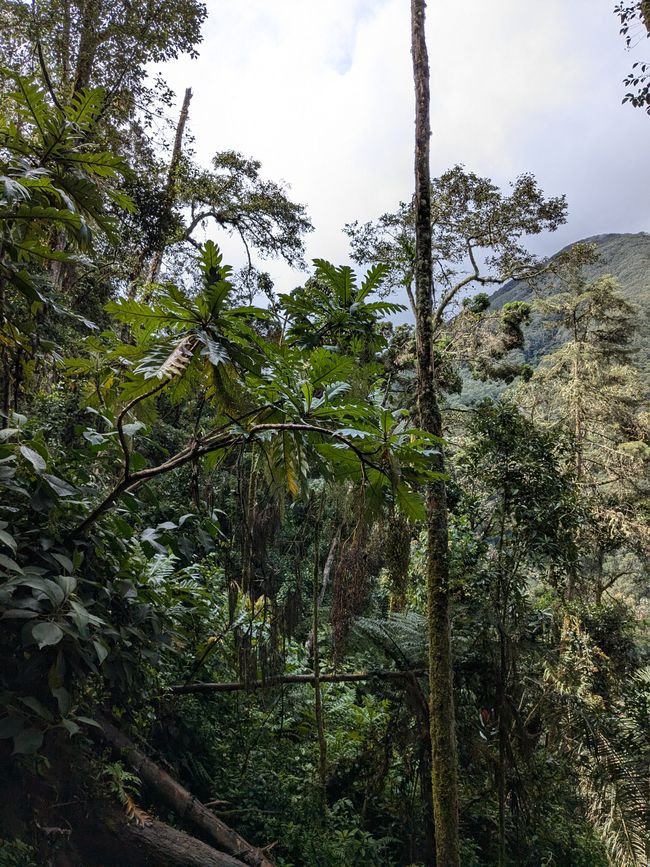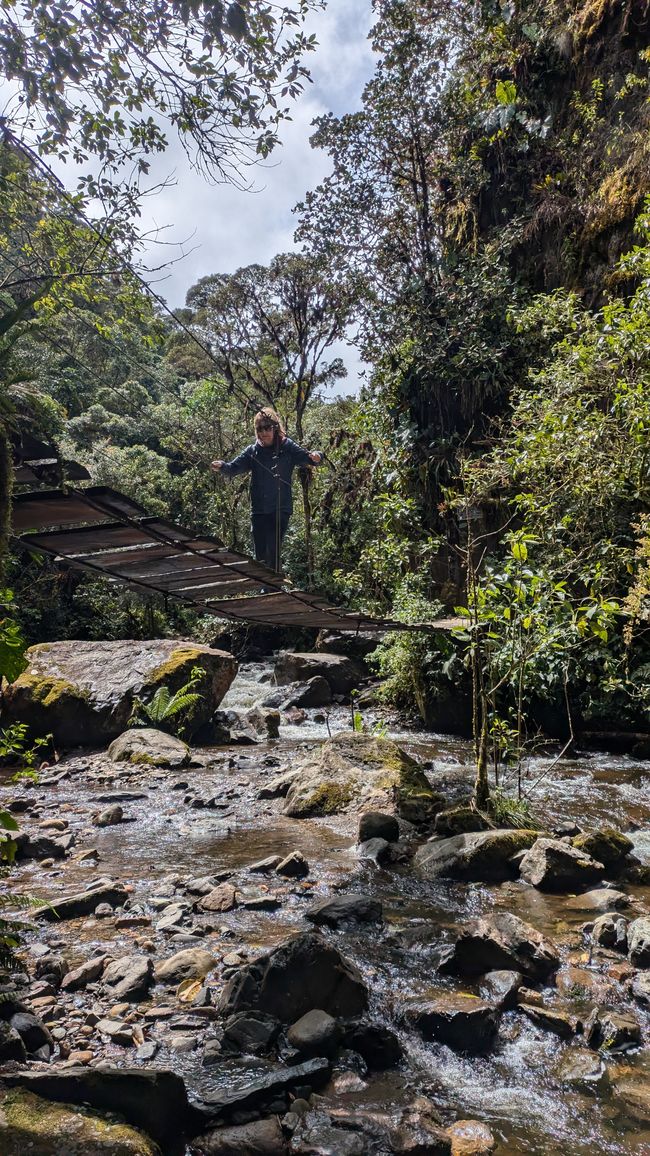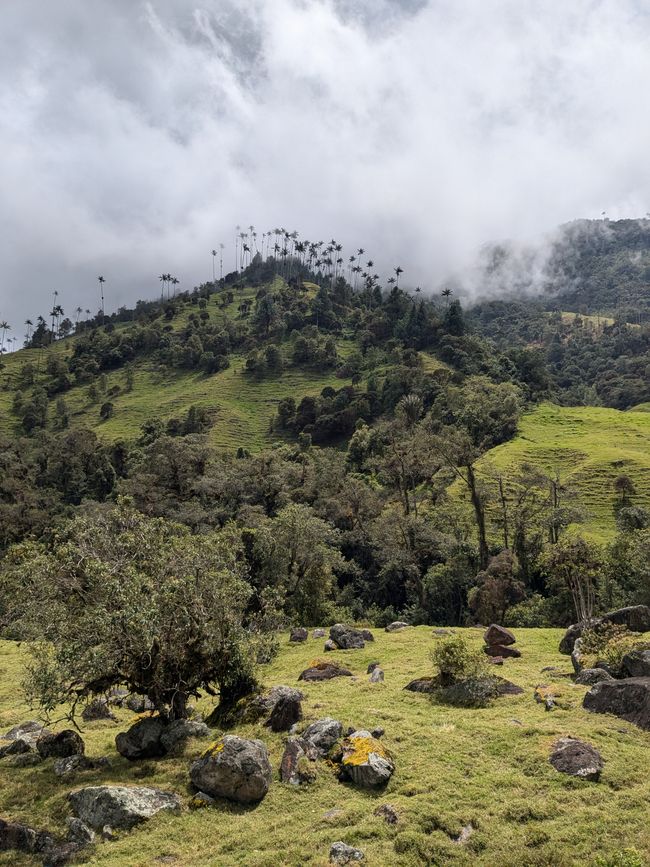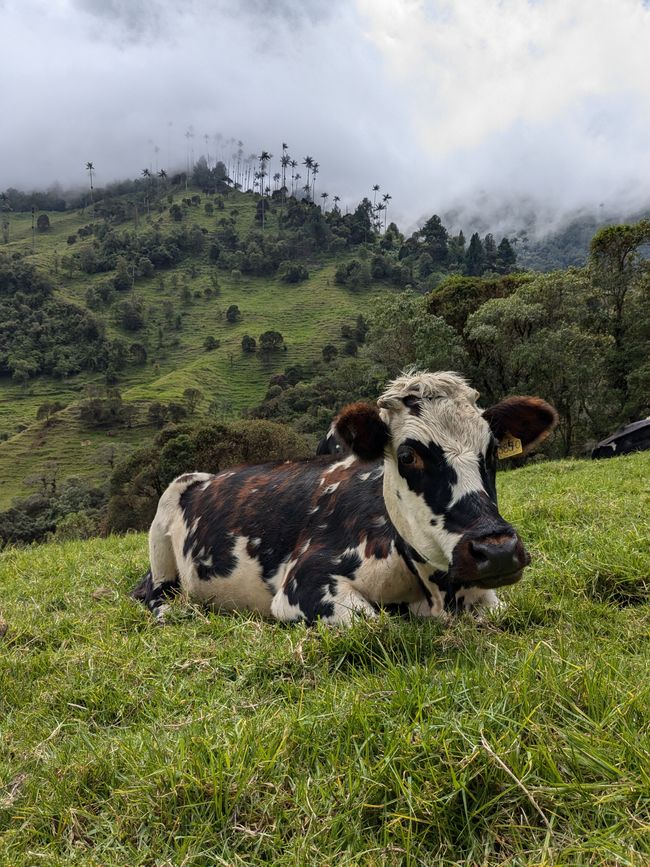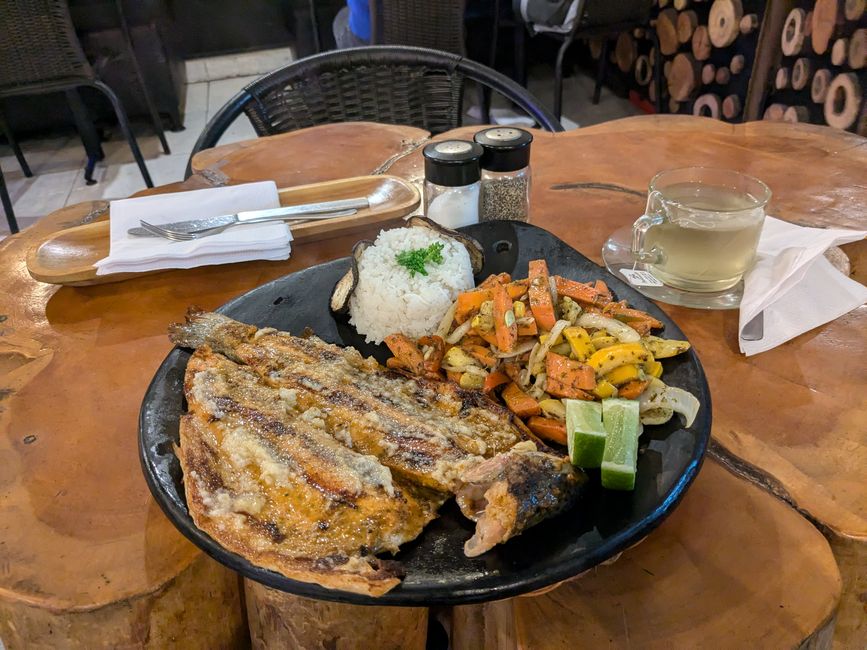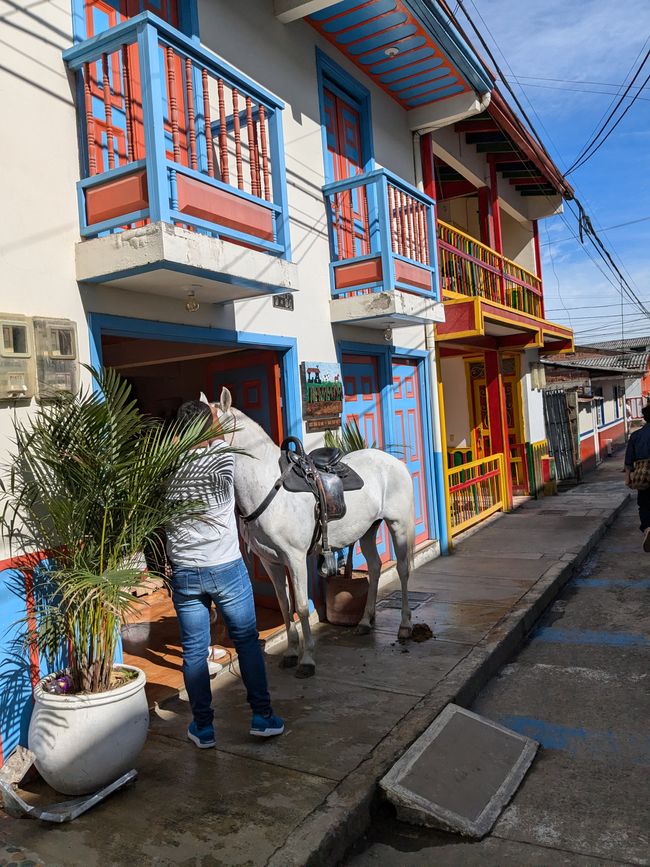Salento
Veröffentlicht: 03.09.2024
Newsletter abonnieren
Quindío, die emblematische Kaffeeanbau-Region Kolumbiens, war für mich ein absolutes Muss auf dieser Reise. Von Medellín aus nahm ich einen Touristenbus und kam abends in meinem Hostel in Salento an. Damit ist keine stallwanger Pizzaria gemeint sondern ein Ort mit 9.000 Einwohnern, der mit seinen 1,2 Millionen Besuchern jährlich quasi das Neuschwanstein Kolumbiens ist. Kaum wachte ich am nächsten Morgen auf, zogen drei Mexikanerinnen in mein Zimmer ein. Wir stellten uns vor und ich fragte sie, ob sie Pläne für den Tag hätten. Gemeinsam gingen wir Richtung Plaza Central, um spontan eine Kaffee-Tour zu machen. Dafür sprangen wir auf einen „Willy“. Diese Jeeps wurden früher von der US-Regierung im Tausch gegen kolumbianischen Kaffee eingeführt. Unser Willy war gut gefüllt: Zwei Touristen saßen auf dem Beifahrersitz, acht auf den Bänken, und vier weitere (mich eingeschlossen) fanden Platz auf dem Trittbrett. Mutig machte ich während der kurvenreichen Fahrt vorbei an Bananen- und Kaffeeplantagen ein paar Fotos, wobei es mir nicht immer gelang, den Ästen auszuweichen.
An der Finca Buenos Aires angekommen, erhielten wir einen dünnen Poncho und Hut sowie eine etwa zweistündige Führung zu allen Einzelheiten des kolumbianischen Kaffeeanbaus, inklusive einer Kostprobe. Den Rest des Tages erkundete ich die pittoresken Gassen Salentos. Obwohl das Zentrum, ähnlich wie Guatapé, vom Tourismus geprägt ist, gibt es doch immer wieder Ecken, die einen Einblick in das ländliche Kolumbien bieten. Diese Region hat einen gewissen Wild-West-Flair, mit Cowboys, die auf Pferden Kühe treiben, und der Bar Danubio. In diesem großen Saloon werden neben dem Trinken zwei Sportarten ausgiebig praktiziert: Billard und Tejo, ein Wurfspiel mit kleinen Böllern (mehr dazu bald im Bogotá-Eintrag).
Am nächsten Tag machten wir uns bereits um 6 Uhr morgens auf den Weg ins Cocora-Tal. Meine drei neuen Freundinnen trennten sich bald von mir und Lyubomir, einem bulgarischen Backpacker, der uns begleitet hatte. Während die drei im Eingangsbereich Content für Instagram und TikTok erstellten, begaben wir uns auf die 8 km lange Wanderung. Diese führte uns zu den spektakulären Ausblicken, für die das Tal in ganz Kolumbien und darüber hinaus bekannt ist. Da wir zu den ersten auf dem Weg gehörten, konnten wir in Ruhe Fotos mit den Cocora-Wachspalmen machen, deren Exemplare die höchsten Palmen der Welt darstellen. Je höher wir kamen, desto mehr gelangten wir in einen kühlen Nebelwald, in dem wir immer wieder verschiedene bunte Vögel entdeckten. Nach einer kleinen Stärkung mit Café Tinto am höchsten Punkt des Wegs ging es hinunter in ein enges Nebental, in das sich ein Gebirgsfluss eingegraben hat. Die Hängebrücken, die wir mehrfach überqueren mussten (ich fühlte mich dabei deutlich wohler als Lyubomir), gaben mir ein starkes Indiana-Jones-Feeling. Zurück im Dorf traf ich mich noch einmal mit den Mexikanerinnen in einem Café und ließ mir am Abend eine köstliche Forelle schmecken.
English:
Quindío, the emblematic coffee-growing region of Colombia, was an absolute must-see for me on this trip. From Medellín, I took a tourist bus and arrived at my hostel in Salento in the evening. I'm not talking about the pizzeria, in my bavarian village but rather a town with 9,000 inhabitants that, with its 1.2 million visitors annually, is practically the Neuschwanstein of Colombia. As soon as I woke up the next morning, three Mexican girls moved into my room. We introduced ourselves, and I asked them if they had any plans for the day. Together, we headed towards Plaza Central to spontaneously take a coffee tour. We hopped on a "Willy," a type of Jeep that was originally introduced by the U.S. government in exchange for Colombian coffee. Our Willy was packed: two tourists sat in the front seat, eight on the benches, and four more (including me) found a spot on the running board. Bravely, I took a few photos during the winding ride past banana and coffee plantations, though I didn't always manage to avoid the branches.
When we arrived at Finca Buenos Aires, we were given a thin poncho and hat and then taken on a two-hour tour covering all the details of Colombian coffee cultivation, including a tasting. I spent the rest of the day exploring the picturesque streets of Salento. Although the town center, like Guatapé, is heavily influenced by tourism, there are still corners that offer a glimpse into rural Colombia. This region has a certain Wild West flair, with cowboys driving cattle on horseback, and the Danubio Bar. In this large saloon, two sports are practiced extensively besides drinking: billiards and Tejo, a throwing game with small explosives (more on that soon in the Bogotá entry).
The next day, we set out at 6 a.m. for the Cocora Valley. My three new friends soon parted ways with me and Lyubomir, a Bulgarian backpacker who had joined us. While the three of them created content for Instagram and TikTok at the entrance, we embarked on the 8 km hike. This hike took us to the spectacular views for which the valley is known throughout Colombia and beyond. Since we were among the first on the trail, we could take our time taking photos with the Cocora wax palms, which are the tallest palm species in the world. The higher we climbed, the more we entered a cool cloud forest, where we spotted various colorful birds. After a quick pick-me-up with Café Tinto at the highest point of the trail, we descended into a narrow side valley carved out by a mountain stream. The suspension bridges we had to cross multiple times (I felt much more comfortable than Lyubomir) gave me a strong Indiana Jones feeling. Back in the village, I met up with the Mexicans in a café again and enjoyed a delicious trout in the evening.
Español:
Quindío, la emblemática región cafetera de Colombia, fue un destino imprescindible para mí en este viaje. Desde Medellín, tomé un bus turístico y llegué por la noche a mi hostal en Salento. No se trata de una pizzería en mi pueblo bavaro, sino de un pueblo con 9.000 habitantes que, con sus 1,2 millones de visitantes anuales, es prácticamente el Neuschwanstein de Colombia. Apenas me desperté a la mañana siguiente, tres mexicanas se mudaron a mi habitación. Nos presentamos, y les pregunté si tenían planes para el día. Juntas nos dirigimos hacia la Plaza Central para hacer una gira de café de manera espontánea. Saltamos en un "Willy", un tipo de Jeep que fue introducido originalmente por el gobierno de los EE. UU. en intercambio por café colombiano. Nuestro Willy estaba lleno: dos turistas se sentaron en el asiento delantero, ocho en los bancos, y cuatro más (incluyéndome a mí) encontraron lugar en el estribo. Con valentía, tomé algunas fotos durante el viaje lleno de curvas, pasando por plantaciones de banano y café, aunque no siempre logré evitar las ramas.
Cuando llegamos a la Finca Buenos Aires, nos dieron un poncho y un sombrero delgados y luego nos llevaron a una visita guiada de dos horas que cubría todos los detalles del cultivo de café en Colombia, incluyendo una degustación. Pasé el resto del día explorando las pintorescas calles de Salento. Aunque el centro, al igual que Guatapé, está fuertemente influenciado por el turismo, todavía hay rincones que ofrecen una visión del Colombia rural. Esta región tiene un cierto aire del Viejo Oeste, con vaqueros arreando ganado a caballo y el bar Danubio. En este gran salón, además de beber, se practican extensamente dos deportes: el billar y el Tejo, un juego de lanzamiento con pequeños explosivos (más sobre esto pronto en la entrada de Bogotá).
Al día siguiente, salimos a las 6 a.m. hacia el Valle del Cocora. Mis tres nuevas amigas pronto se separaron de mí y de Lyubomir, un mochilero búlgaro que se nos había unido. Mientras ellas creaban contenido para Instagram y TikTok en la entrada, nosotros emprendimos la caminata de 8 km. Esta caminata nos llevó a las vistas espectaculares por las que el valle es conocido en toda Colombia y más allá. Como éramos de los primeros en el sendero, pudimos tomarnos nuestro tiempo para hacer fotos con las palmas de cera de Cocora, que son las palmeras más altas del mundo. Cuanto más subíamos, más nos adentrábamos en un fresco bosque de niebla, donde avistamos varias aves coloridas. Después de un pequeño refrigerio con Café Tinto en el punto más alto del sendero, descendimos a un estrecho valle lateral tallado por un arroyo de montaña. Los puentes colgantes que tuvimos que cruzar varias veces (me sentí mucho más cómodo que Lyubomir) me dieron una fuerte sensación de Indiana Jones. De vuelta en el pueblo, me reuní con las mexicanas en un café y disfruté de una deliciosa trucha por la noche.
Newsletter abonnieren
Antworten
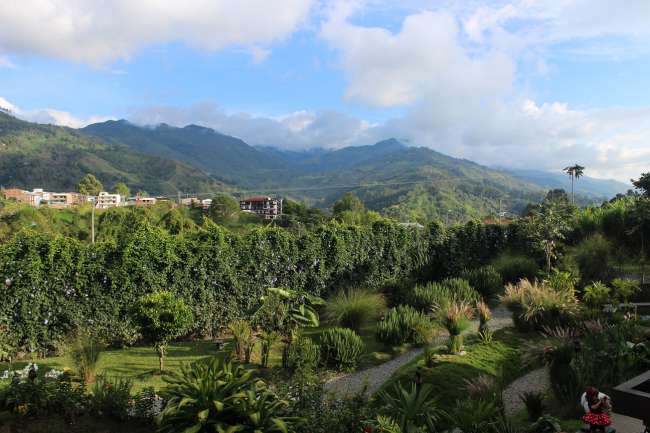
Reiseberichte Kolumbien



